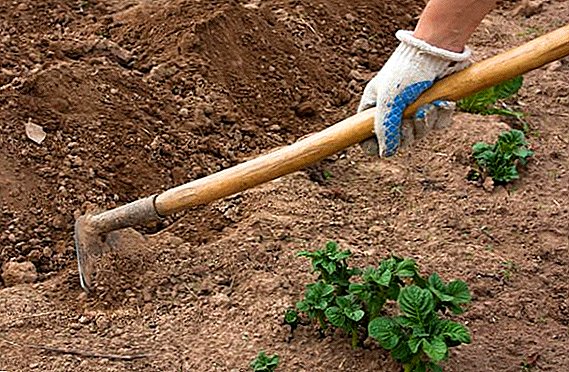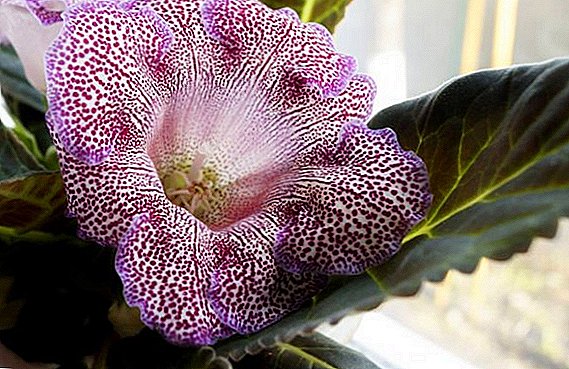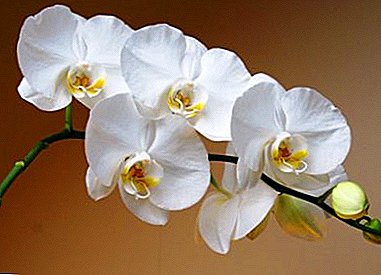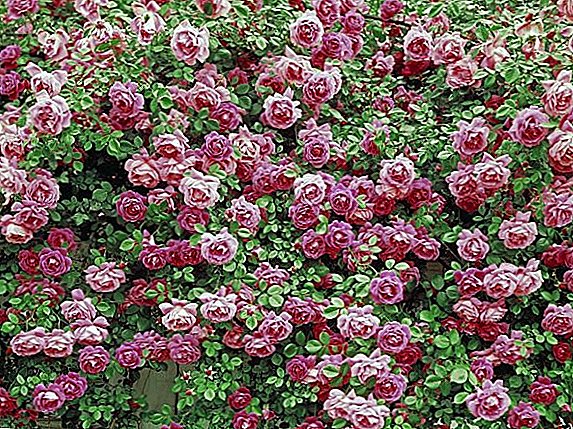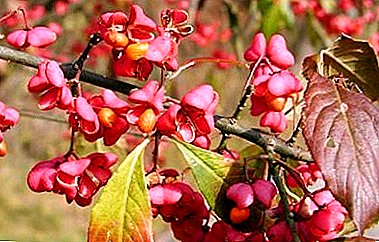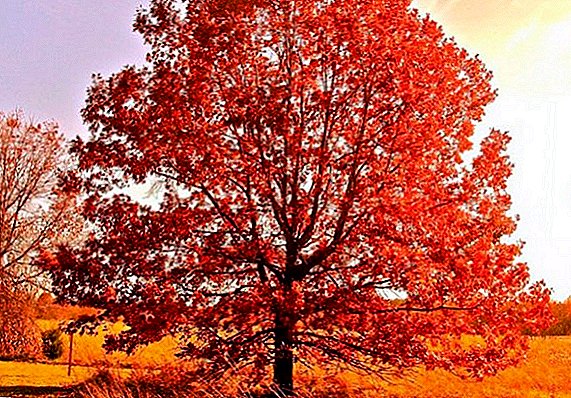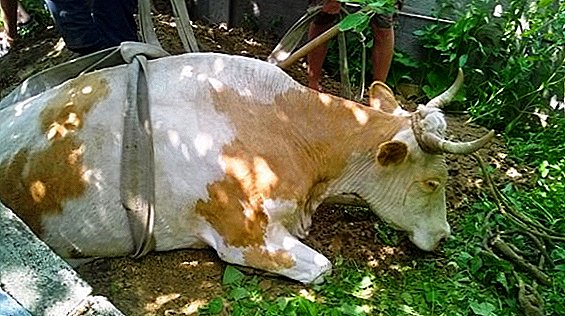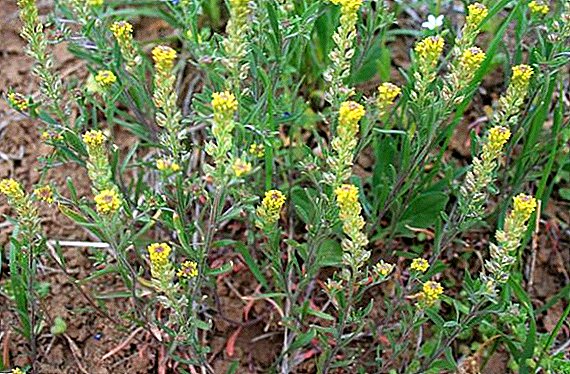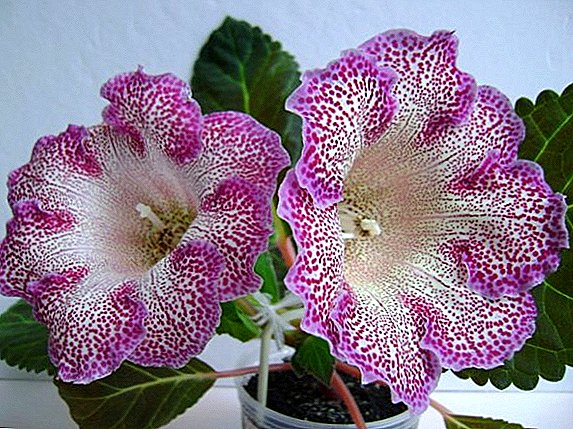 Gloxinia is a tuberous plant with charming funnel-shaped flowers, velvet leaves and a somewhat shortened stem, which is a member of the Gesneriyev family. In its natural environment, it can be found in the tropical rain forests of Peru and Brazil.
Gloxinia is a tuberous plant with charming funnel-shaped flowers, velvet leaves and a somewhat shortened stem, which is a member of the Gesneriyev family. In its natural environment, it can be found in the tropical rain forests of Peru and Brazil.
Gloxinia is unpretentious, but in order to grow and develop normally at home, the grower will have to make some efforts.
Basic care errors
Growing gloxinia does not cause any hassle for both experienced and novice plant growers, but only if the basic rules of care are fulfilled. In order for the plant to be pleased with its generous flowering, it must receive a sufficient amount of light, moisture and feed. Gross blunders may not kill him, but significantly affect the quality of flowering and visual attractiveness.
Why leaves Gloxinia curl
 If you are interested in the question of why the gloxinia began to wrap leaves inside, the answer to this question is easier than you think. Gloxinia leaves are curled if the air in the room is too dry or suffers from cold. Also, plant growers can sometimes face the fact that for some reason, buds start to dry in Gloxinia.
If you are interested in the question of why the gloxinia began to wrap leaves inside, the answer to this question is easier than you think. Gloxinia leaves are curled if the air in the room is too dry or suffers from cold. Also, plant growers can sometimes face the fact that for some reason, buds start to dry in Gloxinia.
The reason for these troubles lies in the lack of moisture in the air and too high ambient temperatures. The plant feels comfortable only in conditions of high humidity and appropriate temperature, and therefore their maintenance is vital for him. Sometimes a problem can be solved if feed the plants with potash-phosphate fertilizers. In addition, the leaves of the Gloxinia curl, if they live spider mite.
Lack or excess of dressings
Lack of fertilizer - serious problem for gloxinia which grows naturally in nutrient grounds. The lack of calcium leads to the fact that all of its young leaves of the plant lose their color intensity and can even curl and fade. The excess of this element is manifested by the appearance of bright, shapeless necrotic spots on the leaves or interstitial chlorosis.
Did you know? To improve the quality of indoor air, scientists advise installing several bushes of gloxinia in the room, since the plant intensively produces oxygen, which prevents the appearance of unpleasant symptoms of oxygen starvation.
 That the plant suffers from phosphorus deficiency, will tell a rich dark green leaf color with a light blue tint, as well as the appearance of brown or red-purple spots. Pathological changes are first observed on the lower leaves, but gradually the whole plant is involved in the process.
That the plant suffers from phosphorus deficiency, will tell a rich dark green leaf color with a light blue tint, as well as the appearance of brown or red-purple spots. Pathological changes are first observed on the lower leaves, but gradually the whole plant is involved in the process.
The development of the bush slows down a lot. If there are new leaves, they are smaller, flowering is either completely absent, or greatly delayed. If a plant has black buds, this may be a sign that it has hibernated at lower temperatures, suffers from a lack of nutrition and excessive watering. More often speed up flowering helps fertilizing bushes with phosphate fertilizers and improving the quality of lighting. Excess phosphorus leads to a breakdown in the absorption of iron by the plant, what causes interstitial chlorosis on its leaves.
No less dangerous is gloxinia and lack of nitrogen. Plants use nitrogen as a building material for protein, in addition, the element is part of chlorophyll. With a lack of nitrogen in the plant there is a significant inhibition of growth intensity, and its shoots become thinner, the size of inflorescences decreases. In general, the bush looks weak and lifeless, and its leaves acquire a pale green color.
 If gloxinia suffers from nitrogen deficiency yellowing and lightening begins with the veins and the adjacent parts of the leaves. Parts of the leaves that are at some distance from the veins, even with a strong lack of nitrogen, can retain their natural color. If the bush receives not enough nitrogen, then on its leaves there is never actually observed green veins.
If gloxinia suffers from nitrogen deficiency yellowing and lightening begins with the veins and the adjacent parts of the leaves. Parts of the leaves that are at some distance from the veins, even with a strong lack of nitrogen, can retain their natural color. If the bush receives not enough nitrogen, then on its leaves there is never actually observed green veins.
However, these symptoms should not be confused with the natural aging of the leaf, since the degradation of the leaf plate in this case begins with the interstitial space. The lack of trace element in the first place suffer the old lower leaves, but over time, changes become visible in all parts of the plant. Sometimes with chronic nitrogen deficiency, they gradually begin to dry and fall off all the leaves at gloxinia.
Did you know? In the 18th century in Europe, King Charles II of Sweden created the “language of flowers”, in which gloxinia meant “love at first sight”.
If you notice that gloxinia is very high in height, this can also be a sign that the plant is suffering from overfeeding with nitrogen or lacking light. In this case, it is necessary to immediately provide the gloxinia with a sufficient amount of light and stop feeding with fertilizers.
 If the leaves of gloxinia acquired a dark green color and became larger and juicy, and the flowering is delayed, then this is a sure sign that the plant overfed with nitrogen and it should be for some time to stop the introduction of this trace element.
If the leaves of gloxinia acquired a dark green color and became larger and juicy, and the flowering is delayed, then this is a sure sign that the plant overfed with nitrogen and it should be for some time to stop the introduction of this trace element.
Overfeeding and underfeeding equally adversely affect the development of the bush: with the shortage of useful substances by the plant, a significant decrease in its growth rates is observed, as well as a delay or absence of flowering. The main danger of overfeeding is that in this case the plant can suffer from chemical burns. And if at this moment you do not provide him with the necessary assistance (rinse the soil well or transplant it into a new soil), then this may cause complete destruction of gloxinia.
Gloxinia starts to rot
Excessive watering, excess nitrogen and increased soil acidity - The most common causes of gloxinia rotting. If the plant completely wilts, the leaves begin to dry and fall, then this is a sure sign that gloxinia has a tuber. At the initial stage of the disease makes itself felt the loss of turgor leaves, which is not restored after watering.
Important! Gloxinia should be protected from hypothermia, since even a brief lack of heat can cause rotting of the tubers of the plant, and if you do not help it during this period, it will die very quickly.
 When a tuber decays, To save the plant, it is necessary to thoroughly clean it from rot, cut off all its leaves and soak for 20 minutes in a steep solution of potassium permanganate, then dry, treat the damaged area with crushed charcoal and land in a slightly moistened soil. After transplantation, the plant should receive a minimum amount of moisture.
When a tuber decays, To save the plant, it is necessary to thoroughly clean it from rot, cut off all its leaves and soak for 20 minutes in a steep solution of potassium permanganate, then dry, treat the damaged area with crushed charcoal and land in a slightly moistened soil. After transplantation, the plant should receive a minimum amount of moisture.
Gloxinia does not bloom
Very often, inexperienced breeders, wishing to provide gloxinia with all the necessary nutrients, are fed with nitrogen. but as a result of excessive introduction of the trace element plant, on the contrary, completely refuses to bloom. The fact is that gloxinia reacts poorly to overfeeding with nitrogen. This element perfectly stimulates the growth of green mass, but it causes a delay in flowering.
In addition, the lack of flowering can also be caused by a lack of light, drafts, low ambient temperature, lack of moisture and even too short wintering. In order for gloxinia to please with its generous flowering next season, it is necessary to ensure a rest period of at least three months, and after waking up immediately put the pot with the plant in a well-lit place. A lack of light can cause the budding to not set, and, besides this, there can be very few of them, or they can be formed incorrectly, which can cause empty flowers or incomplete disclosure.
Did you know? There are different varieties of gloxinia, but on average, the size of the bushes ranges from 20 to 50 cm. However, the tiny gloxinia species is known to science: its bushes do not exceed 5 cm in height, and the size of its leaves does not exceed 1 cm.
 Sometimes gloxinia persistently refuses to bloom because of an incorrectly chosen pot. For the cultivation of gloxinia should choose wide and low pots. Excessive depth of the pot can cause the plant to intensively grow the tuber at the expense of flowering.
Sometimes gloxinia persistently refuses to bloom because of an incorrectly chosen pot. For the cultivation of gloxinia should choose wide and low pots. Excessive depth of the pot can cause the plant to intensively grow the tuber at the expense of flowering.
Many flower growers complain that for some reason, gloxinia does not wake up after wintering. If gloxinia does not sprout after winter, then There may be several reasons for this. For example, a healthy and adult tuber was stored for less than three months and did not manage to accumulate a sufficient amount of all the substances necessary for active growth. Also, the reason may be that it has dried up during wintering.
Important! To avoid drying of gloxinia tubers, they should be kept in tightly closed plastic bags with a small amount of moist soil or moss during wintering.Periodically moisturize the tubers and make sure that they do not dry out. When the first leaves appear, immediately transplant them into prepared pots.
If gloxinia tuber did not die of old age or the fungus did not hit it, then it will surely germinate and please with generous flowering, you just need to wait a bit.
Major Gloxinia Diseases
If you want gloxinia to please you with a generous flowering, then you need to know what leaf diseases exist and how to treat them, as well as familiarize yourself with the main difficulties in growing it.
Late blight
 Late blight is one of the most dangerous fungal diseases for gloxinia.
Late blight is one of the most dangerous fungal diseases for gloxinia.
Infection spreads through the soil, contaminated planting stock, equipment or rainwater.
Important! In order to prevent the defeat of gloxinia tubers with infectious diseases, in addition to soil sterilization, it is necessary to disinfect the planting material. To do this, put the tuber or cuttings of the plant for five minutes in suspension "Captan".
The average incubation period for the disease is two months. Plant disease infection can contribute to:
- incorrect watering;
- solid ground;
- too close placement of bushes;
- water stagnation;
- high humidity;
- low ambient temperature.
For prophylactic purposes, it is recommended to spray the bushes with such drugs as "Polycarbocide", "Captan" and "Zineb".
Fusarium
 Fusarium - a fungal infection, manifested by yellowing and wilting of the leaves, and later the whole plant. The source of infection is infected seed and soil. First, the pathogen infects small roots, and after the mycelium grows, larger roots are involved in the pathological process. The infection spreads through the vessels of the plant, first the stem is affected, and eventually the whole plant. The lower leaves are the first to die, and all the rest become watery. Separate areas of the leaves may acquire a pale green or light yellow color. To stop the spread of infection, remove all diseased plants immediately. As a prophylactic treatment, you can use "Fundazol".
Fusarium - a fungal infection, manifested by yellowing and wilting of the leaves, and later the whole plant. The source of infection is infected seed and soil. First, the pathogen infects small roots, and after the mycelium grows, larger roots are involved in the pathological process. The infection spreads through the vessels of the plant, first the stem is affected, and eventually the whole plant. The lower leaves are the first to die, and all the rest become watery. Separate areas of the leaves may acquire a pale green or light yellow color. To stop the spread of infection, remove all diseased plants immediately. As a prophylactic treatment, you can use "Fundazol".
Gray rot
 Gray rot is a dangerous infectious disease resulting from improper care of gloxinia. The infection spreads rapidly, affecting the tubers of young plants. When the bush is infected with gray mold, the plant begins to grow slowly and bloom badly.
Gray rot is a dangerous infectious disease resulting from improper care of gloxinia. The infection spreads rapidly, affecting the tubers of young plants. When the bush is infected with gray mold, the plant begins to grow slowly and bloom badly.
In order to prevent further development of the infection, it is necessary to remove on the tubers all areas damaged by fungus to healthy tissues. To prevent re-infection, the site of the slice is dried, treated with sulfur or crushed charcoal, and only then planted in the ground again.
Blackleg
 The black leg is caused by a phytopathogenic fungus contained in the soil. In the affected plants, the hilar neck is the first to suffer, with the result that the stem, as knocked down, begins to creep along the ground.
The black leg is caused by a phytopathogenic fungus contained in the soil. In the affected plants, the hilar neck is the first to suffer, with the result that the stem, as knocked down, begins to creep along the ground.
To prevent the development of infection, before planting plants, you must first carry out the disinfection of the soil by heating. At infection of a bush it is treated with a solution of copper sulphate. Before or after planting seeds in the soil, the soil is treated with charcoal or colloidal sulfur. You should also correct the watering, as excessive soil moisture contributes to the development of infection.
Mealy dew
 Mealy dew is caused by a fungal infection. The disease is characterized by the appearance of a mealy plaque on the plant: externally, the plants look as if someone has powdered them with flour. Predisposing factors contributing to the development of the disease are considered excessive watering and sudden temperature fluctuations.
Mealy dew is caused by a fungal infection. The disease is characterized by the appearance of a mealy plaque on the plant: externally, the plants look as if someone has powdered them with flour. Predisposing factors contributing to the development of the disease are considered excessive watering and sudden temperature fluctuations.
The source of the disease is soil or infected planting material. If a bush is affected with powdery mildew, it is recommended to destroy it to prevent the spread of infection. However, at the initial stage of the disease, the plant can be saved by treatment with any fungicidal agent, for example, "Vectra".
The main pests of gloxinia
Gloxinia sometimes suffers from various pests, but is most susceptible to attack. aphids, spider mites and thrips.
How to deal with aphids
 If you notice green or brownish small insects on your plants, then most likely gloxinia was attacked by aphids. Insect feeds on plant sap. The pest primarily affects young leaves, as a result of which they begin to curl and deform. With a slight lesion, the insect is swept away with a brush, and then simply destroyed. If there is a massive contamination of gloxinia, it is recommended to treat the bush "Confidor" or "Decis".
If you notice green or brownish small insects on your plants, then most likely gloxinia was attacked by aphids. Insect feeds on plant sap. The pest primarily affects young leaves, as a result of which they begin to curl and deform. With a slight lesion, the insect is swept away with a brush, and then simply destroyed. If there is a massive contamination of gloxinia, it is recommended to treat the bush "Confidor" or "Decis".
How to get rid of ticks on gloxinia
If gloxinia is affected by spider mite, you may notice small spots on the edges of its leaves, which have a silvery shade on the reverse side of the leaf. Such flaws appear in those places where the tick sucks the cell sap from the plant. Over time, on the underside of the leaves, the thinnest web also becomes noticeable. To repel a pest attack, the leaves should be wiped with a sponge dipped in hot soapy water. From insecticides can be used "Neoron". The drug is carried out two or three times with an interval of not more than 7 days.
Thrips on gloxinia
 Thrips have a slightly elongated body and are considered the most common pest that affects indoor plants. If you notice that gloxinia leaves fade, and do not know what to do, then carefully examine the bushes for seeding with thrips. Insect feeds on cell sap or plant nectar. The first sign that the plant is infected with thrips, - the appearance of light stripes on the sheets which over time merge and form conglomerates, which leads to wilting of the plant.
Thrips have a slightly elongated body and are considered the most common pest that affects indoor plants. If you notice that gloxinia leaves fade, and do not know what to do, then carefully examine the bushes for seeding with thrips. Insect feeds on cell sap or plant nectar. The first sign that the plant is infected with thrips, - the appearance of light stripes on the sheets which over time merge and form conglomerates, which leads to wilting of the plant.
Thrips are very tenacious, and therefore insecticides are considered the best way to combat them. When a pest is found, the injured plant must be isolated from all other indoor plants and carefully sanitized the place where the pot stood. To combat the pest use drugs Actellic or Intavir.
If you take due care of the bushes and surround them with attention, then surely blooming gloxinia will be the main decoration of your home.


